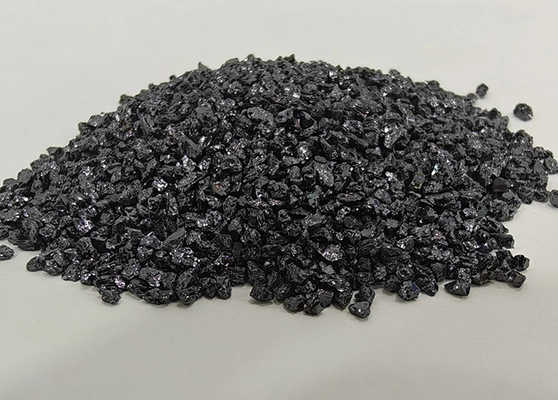With the ever-increasing cost of gasoline and the growing desire to protect the environment, it’s no surprise that electric vehicles are gaining momentum. Automakers are aggressively pushing to launch all-electric products even earlier than the original target date of 2040.
The Growing Momentum Behind Electric Vehicles
With the increasing cost of gasoline and the growing desire to protect the environment, Electric Vehicles It’s no surprise that momentum is building for electric vehicles. Automakers are aggressively pushing to launch all-electric products, even earlier than the original target date of 2040.
To support the growth of electrification, the supply chain that supports these vehicles is making huge investments, especially in the manufacturing of drivetrain components.
Transmission Integration and EV Efficiency
Incorporating the transmission into the electric vehicle propulsion system helps automakers improve drive system efficiency. Not only can the vehicle’s range and performance be increased while maintaining the same size battery, motor, and propulsion system — it can also allow the use of smaller batteries and motors while still maintaining the same range and performance of current systems.
Why NVH Matters in Electric Drivetrains
Due to the lower vehicle noise levels produced by electric vehicles, driveline components need to meet lower noise, harshness and vibration (NHV) levels than their ICE (internal combustion engine) counterparts.
To reduce NVH and improve vehicle performance, driveline manufacturers are continuously compressing the finish, concentricity, roundness, runout and profile tolerances of shafts, bearings and gears. As these driveline component tolerances are tightened, traditional machining and turning processes are often used.
The grinding process is being replaced by the grinding process because it is easier to meet these more stringent requirements.
Traditional Gear Production Methods
Hobbing
Historically, gear manufacturing has used a hobbing process to produce gears in a continuous process, which is much faster than grinding one tooth at a time. This process can produce gears quickly, but it does not produce the level of precision required for today's new transmissions and gearboxes.
Broaching
Broaching is another traditional gear production method, but it usually only processes one tooth at a time and usually requires a large upfront investment in equipment.
To meet today's higher quality standards for reducing gear noise and improving power transmission efficiency, gear designs incorporate finer tooth surface finishes and more precise tooth profiles (with various modifications), which are often made with grinding wheels.
Grinding Wheel Advantages
Gear machining with grinding wheels has many advantages over hobbing and machining processes. Since the grinding wheel consists of hundreds to thousands of cutting points, the size of the chip marks is significantly smaller than in hobbing. Therefore, it is easier to achieve finer surface roughness values through grinding.
When abrasive particles move across the workpiece, they form chips. Smaller abrasives produce smaller chips, and smaller chips result in a smoother surface finish on the workpiece.
Abrasive particles are typically orders of magnitude smaller than those of conventional cutting tools such as hobs or end mills, which is why they typically produce superior surface finishes. Grinding wheels are available in a variety of grit sizes, depending on the target surface roughness and shape retention requirements.
Grinding vs. Shaving: NVH Test Results
There are differences between the grinding and shaving processes used to produce finished gears, and their impact on the noise radiated from gears.
Testing has shown that grinding produces the lowest noise levels of the two processes (i.e. closest to the nominal target). This is generally attributed to the controlled micro-geometry within the gear teeth and the lower roughness values achieved through grinding.
Grinding Hardened Gear Teeth
Due to the intense wear on the gear tooth surface, gear teeth are usually heat treated to a specific hardness range to improve wear resistance and extend service life. Hardness values range from 56–64 RHC, with many values around 58–62 RHC.
Grinding wheels are excellent at removing material in the case-hardened layer because they use very hard abrasive grains such as aluminum oxide, silicon carbide, and CBN/diamond. These abrasives are more effective than metal cutting tools in removing hardened materials.
The core and teeth of gears are usually softer (45–50 RHC) to allow for some tolerance and reduce the possibility of brittle fracture.
Grinding wheels are excellent at removing material in the case-hardened layer because they use very hard abrasive grains such as aluminum oxide, silicon carbide, and CBN/diamond. These abrasives are more effective than metal cutting tools in removing hardened materials.
Abrasive Hardness and Tool Wear
Abrasives are 1.5 to 4 times harder than hardened tool steel or carbide. This allows them to last longer and wear less when grinding hardened materials. Reduced abrasive wear helps control gear profile changes over time.
New Grinding Technologies: Engineered Ceramic Abrasives
New ceramic particles developed by some grinding wheel manufacturers are designed to meet the needs of better surface finish and profile control in gear grinding. These engineered abrasives micro-fracture during use, providing two benefits:
- They keep the wheel sharp as it wears, reducing heat and holding tighter tolerances.
- They produce smaller chips, improving surface finish over previous particle generations.
Conclusion: Grinding is Critical for EV NVH and Efficiency Goals
Switching from machining to grinding offers significant advantages for meeting strict NVH requirements in EV drivetrains. Like hobs, worm grinding wheels can produce gears quickly — but with better surface finish and tighter tolerances, thanks to their hardness and concentrated cutting points.
